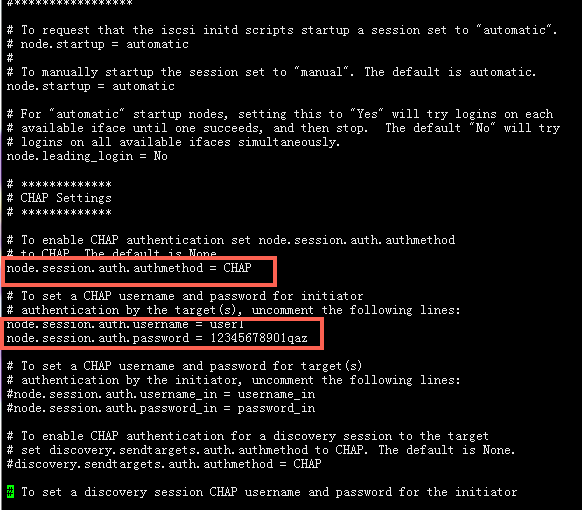This topic describes how to connect to and use an iSCSI volume from the Linux operating system.
Prerequisites
Procedure
- Log on to the Linux operating system on your on-premises host.
- Install the iscsi-initiator-utils package.
You must use the iscsi-initiator-utils package to connect to the iSCSI volume. If the iscsi-initiator-utils package is installed, skip this step.
sudo yum install iscsi-initiator-utils - Run the following command to verify that the iSCSI daemon is running.
- If you use Red Hat Enterprise Linux (RHEL) 5 or RHEL 6, run the following command:
sudo /etc/init.d/iscsi status - If you use RHEL 7, run the following command:
sudo service iscsid status
If the proceeding commands do not return running to you, run the
sudo /etc/init.d/iscsi startcommand to start the iSCSI daemon. - If you use Red Hat Enterprise Linux (RHEL) 5 or RHEL 6, run the following command:
- Optional. Configure CHAP authentication.Note If you enable the CHAP authentication when you create an iSCSI volume, you must configure CHAP settings in this step. Then, you can use the iSCSI volume.
- Run the following command to open the iscsid.conf configuration file:
vi /etc/iscsi/iscsid.conf - Find CHAP Settings, delete the hash character (#) before the related comments, and then set a CHAP username and password.
- Enter the CHAP username that you set when you created the iSCSI volume.
- Enter the CHAP password that you set when you created the iSCSI volume.

- Run the following command to open the iscsid.conf configuration file:
- Run the following command to discover the iSCSI volume:
iscsiadm -m discovery -t st -p <IP address>:3260- IP address is the IP address of the block gateway. To obtain the IP address, you can choose About > Network Information in the on-premises block gateway console.
- 3260 is the access port. Do not change the port.
- Run the following command to mount the iSCSI volume:
iscsiadm -m node -T <target name> -p <IP address>:3260 -l- target name is the target name of the iSCSI volume. You can obtain the target name in Step 2.
- IP address is the IP address of the block gateway. To obtain the IP address, you can choose About > Network Information in the on-premises block gateway console.
- 3260 is the access port. Do not change the port.
Note Due to the limits of the iSCSI protocol, you cannot mount one iSCSI volume to multiple Linux clients. - Run the
fdisk -lorlsblkcommand to view the iSCSI volume.In this case, the mounted iSCSI volume is an available raw disk. You can read data from and write data to the iSCSI volume from an on-premises host.

- Unmount the iSCSI volume.
You can run the following command to unmount the iSCSI volume:
iscsiadm -m node -T <target name> -p <IP address>:3260 -u